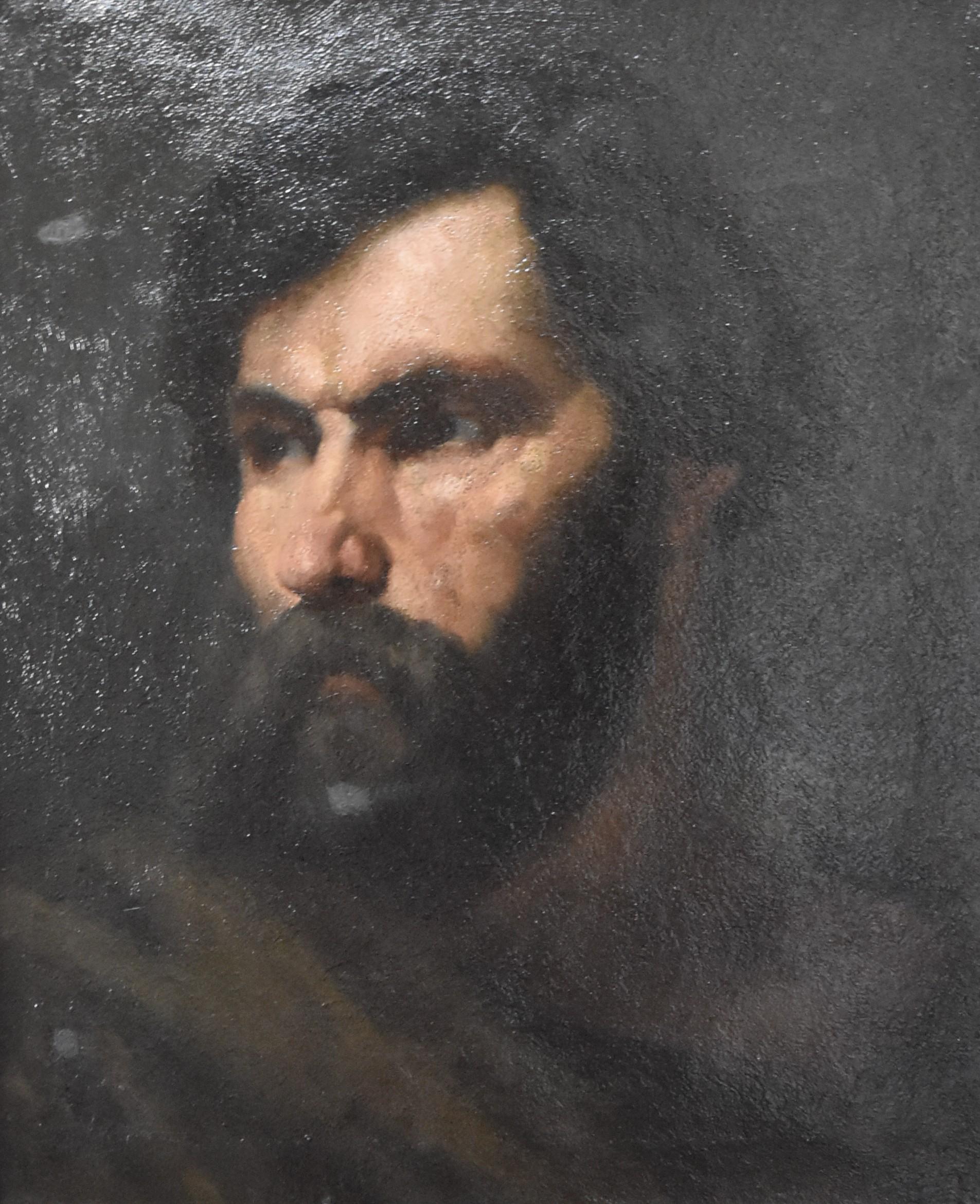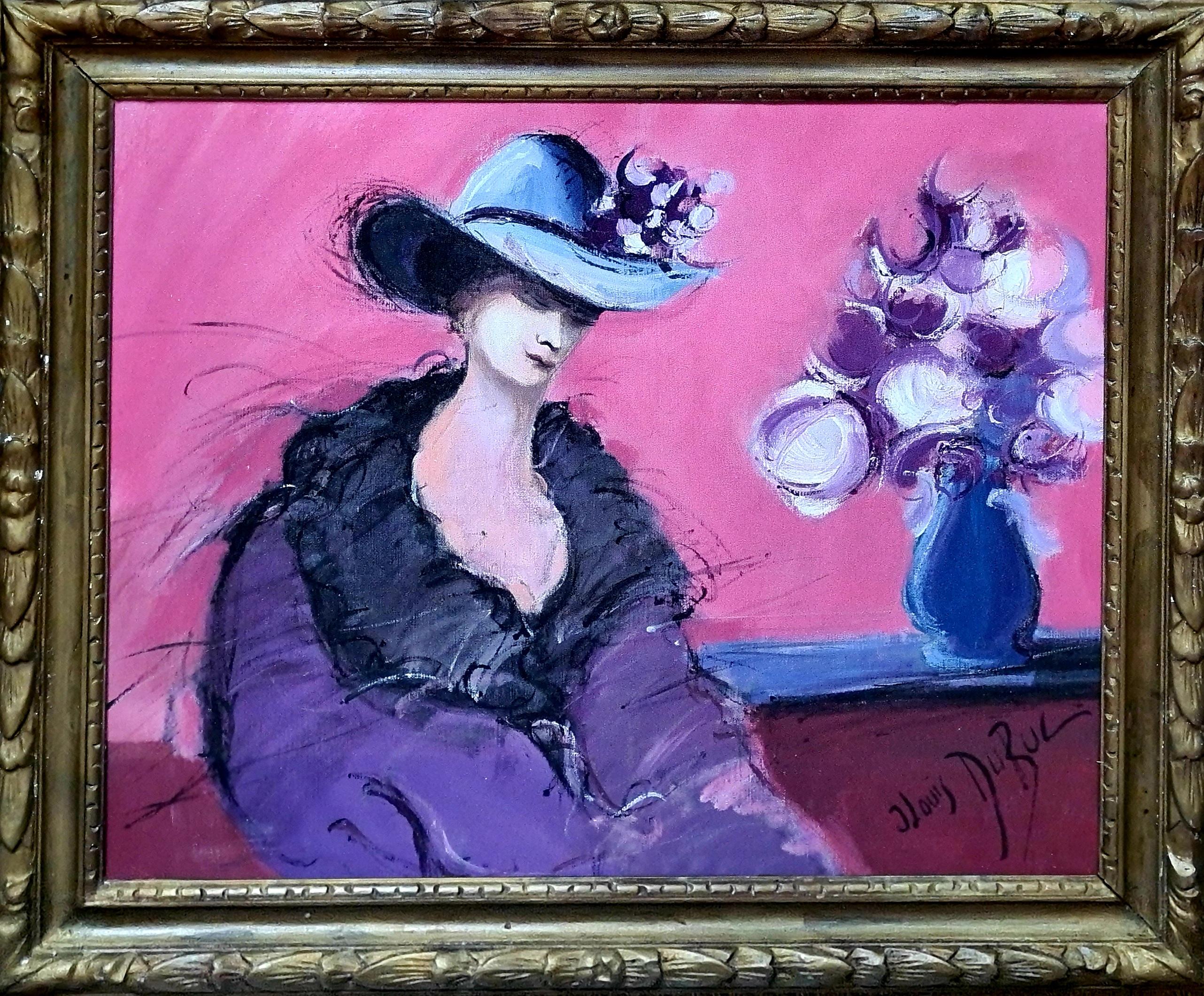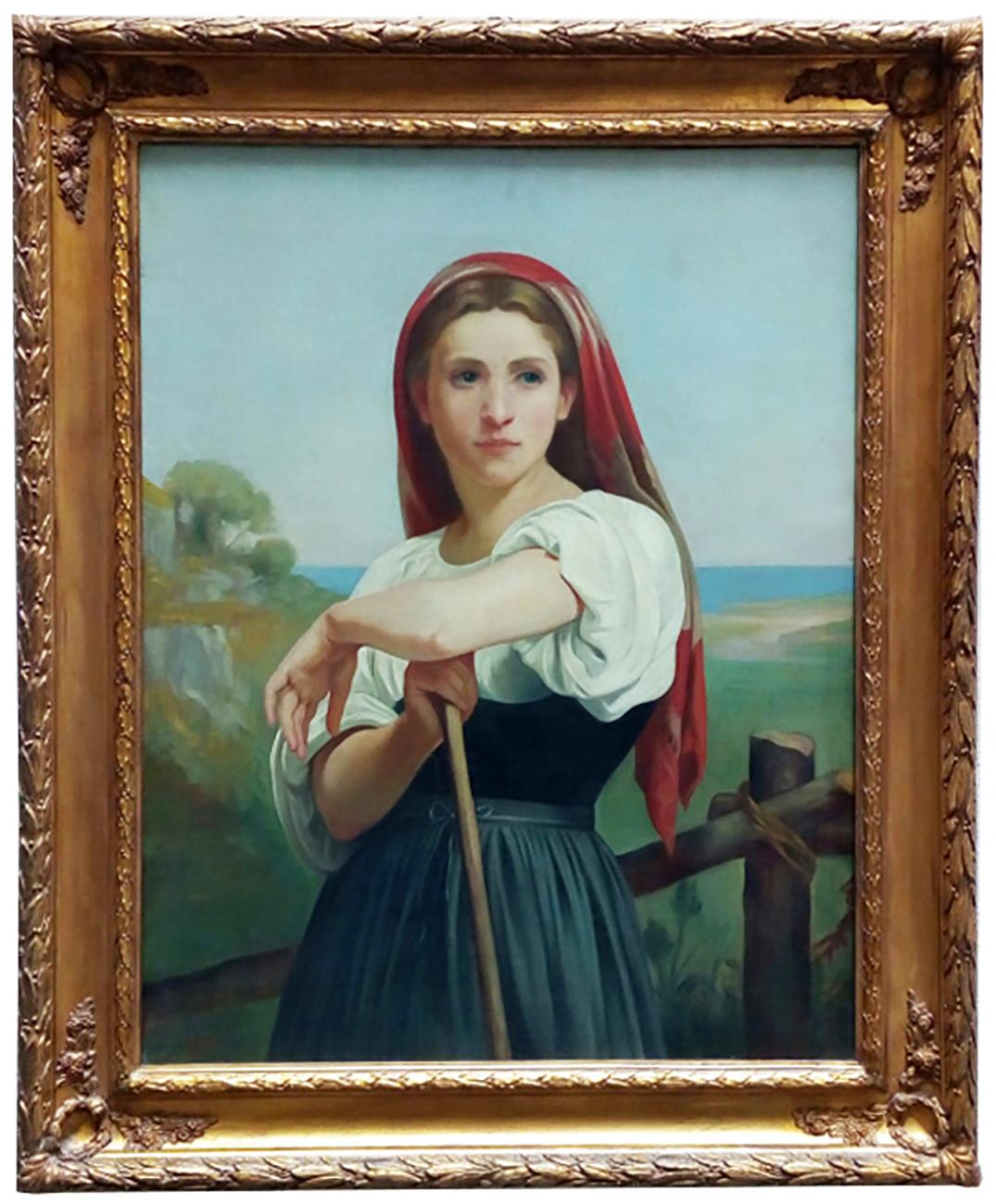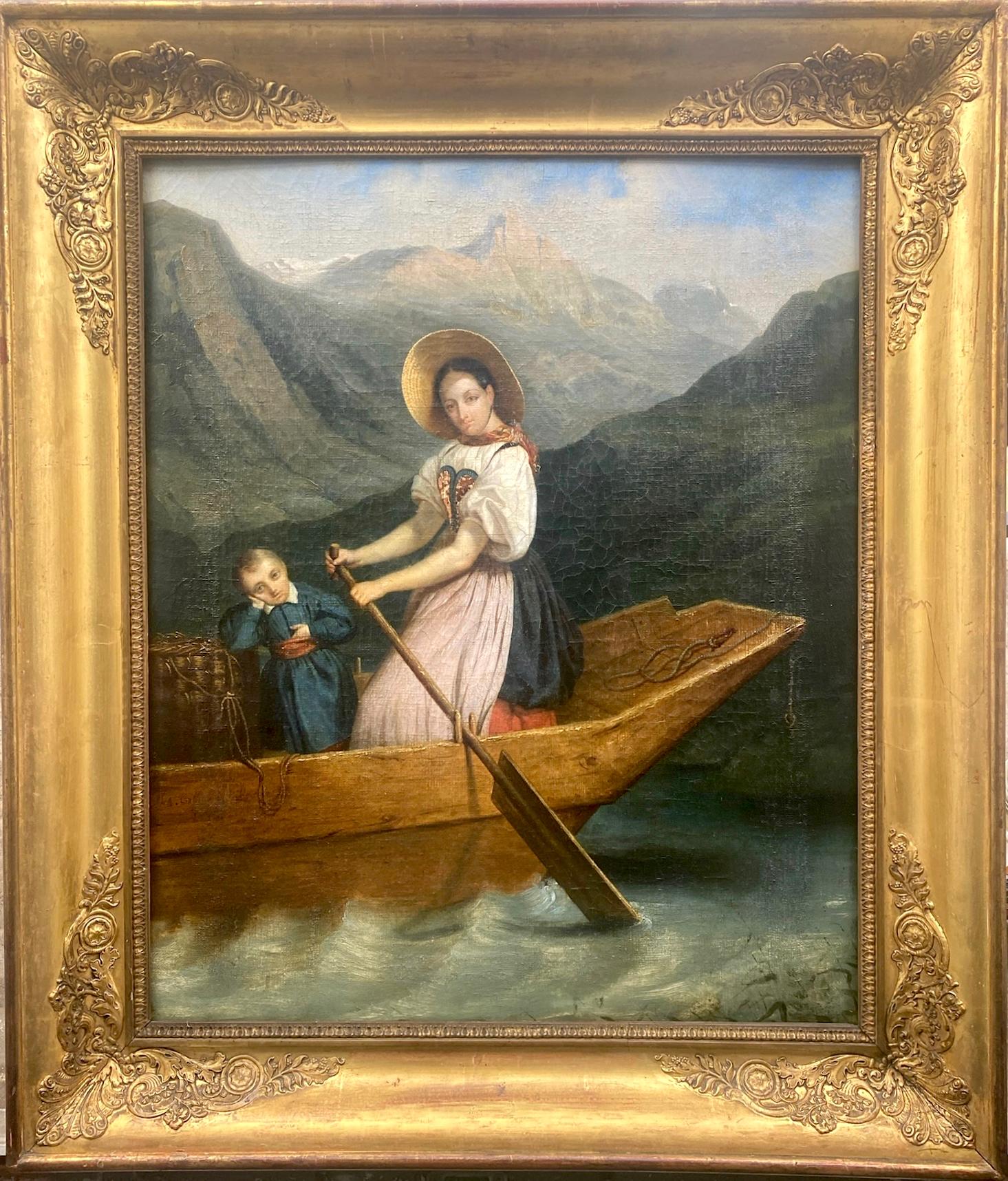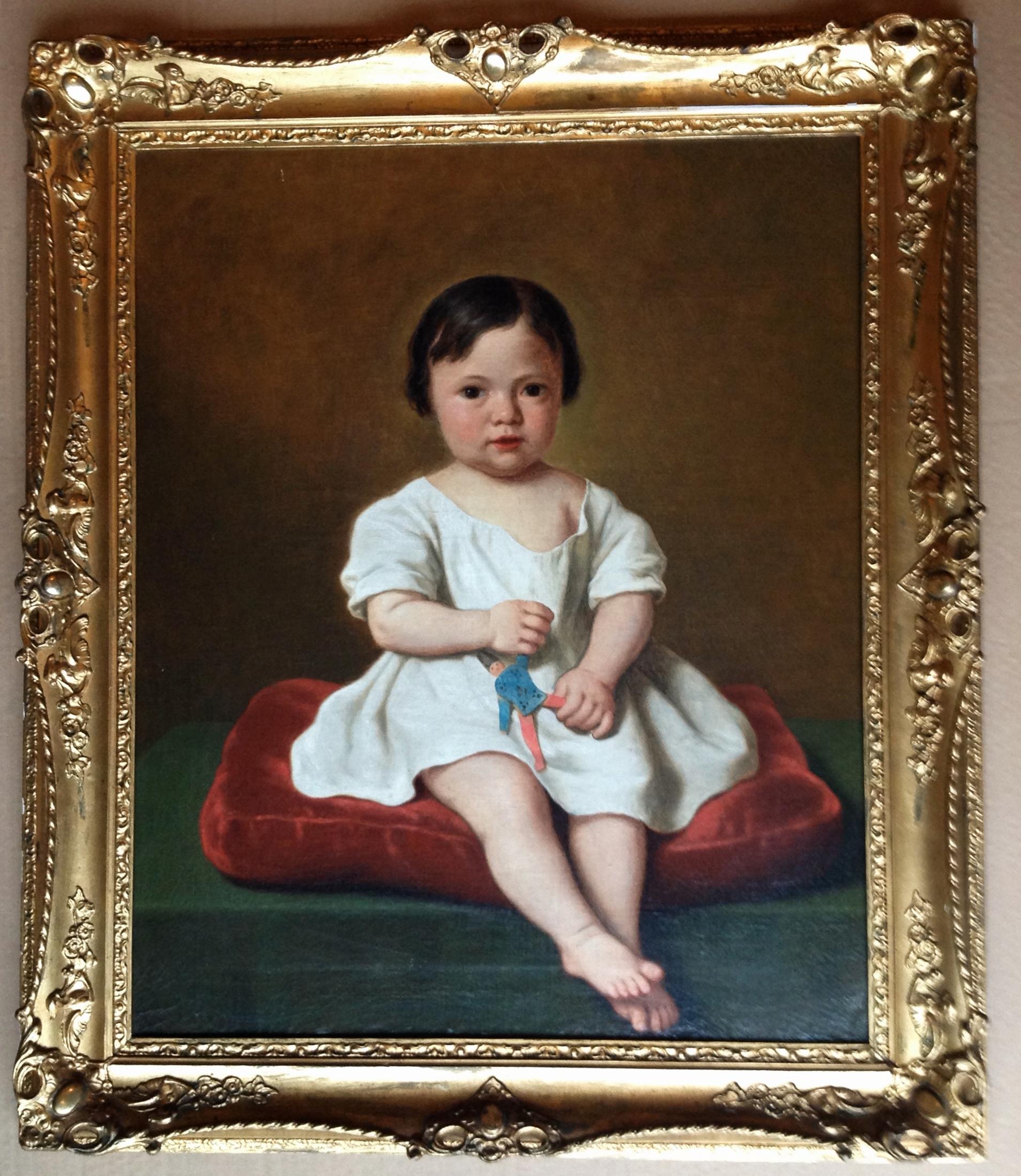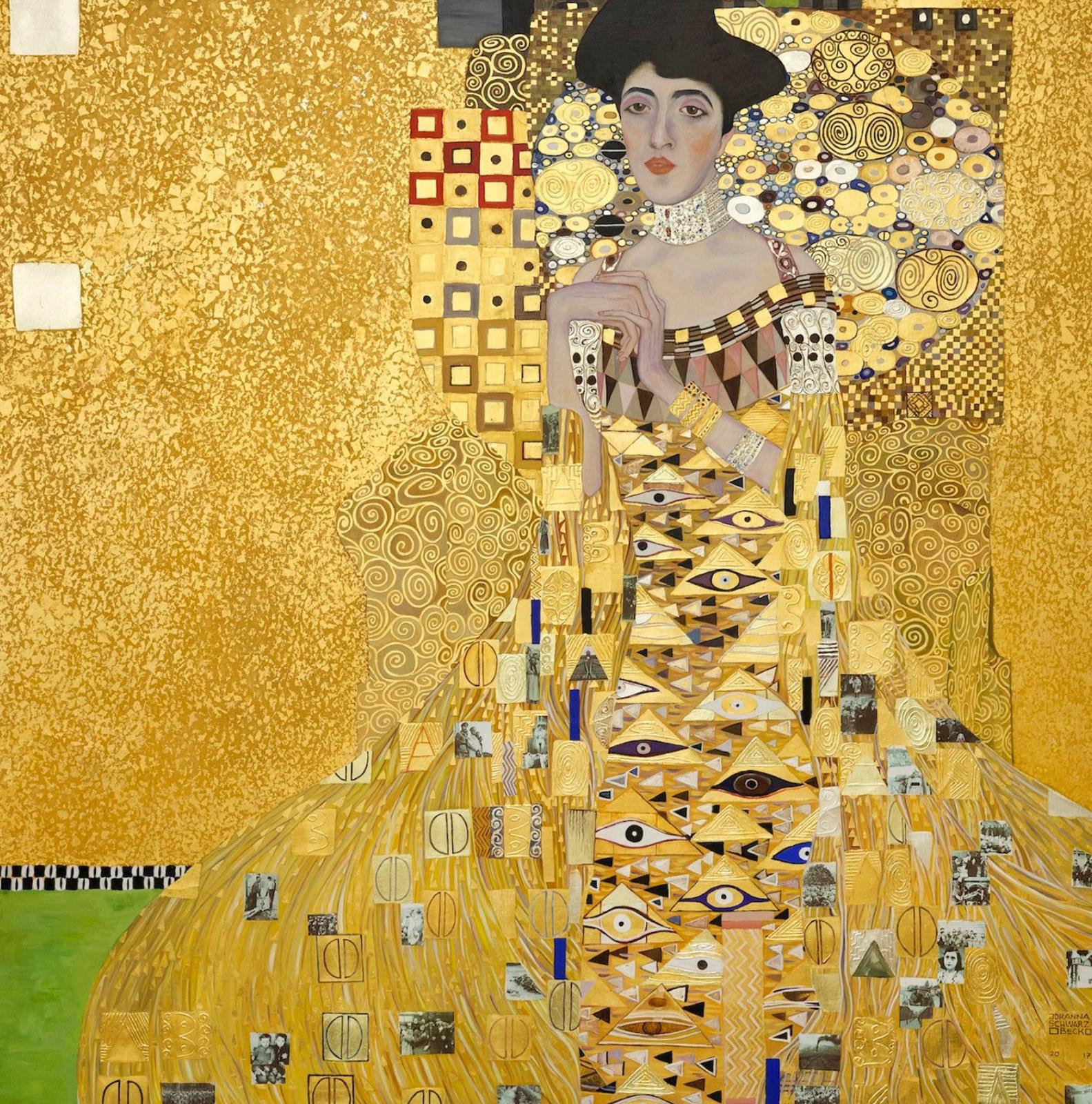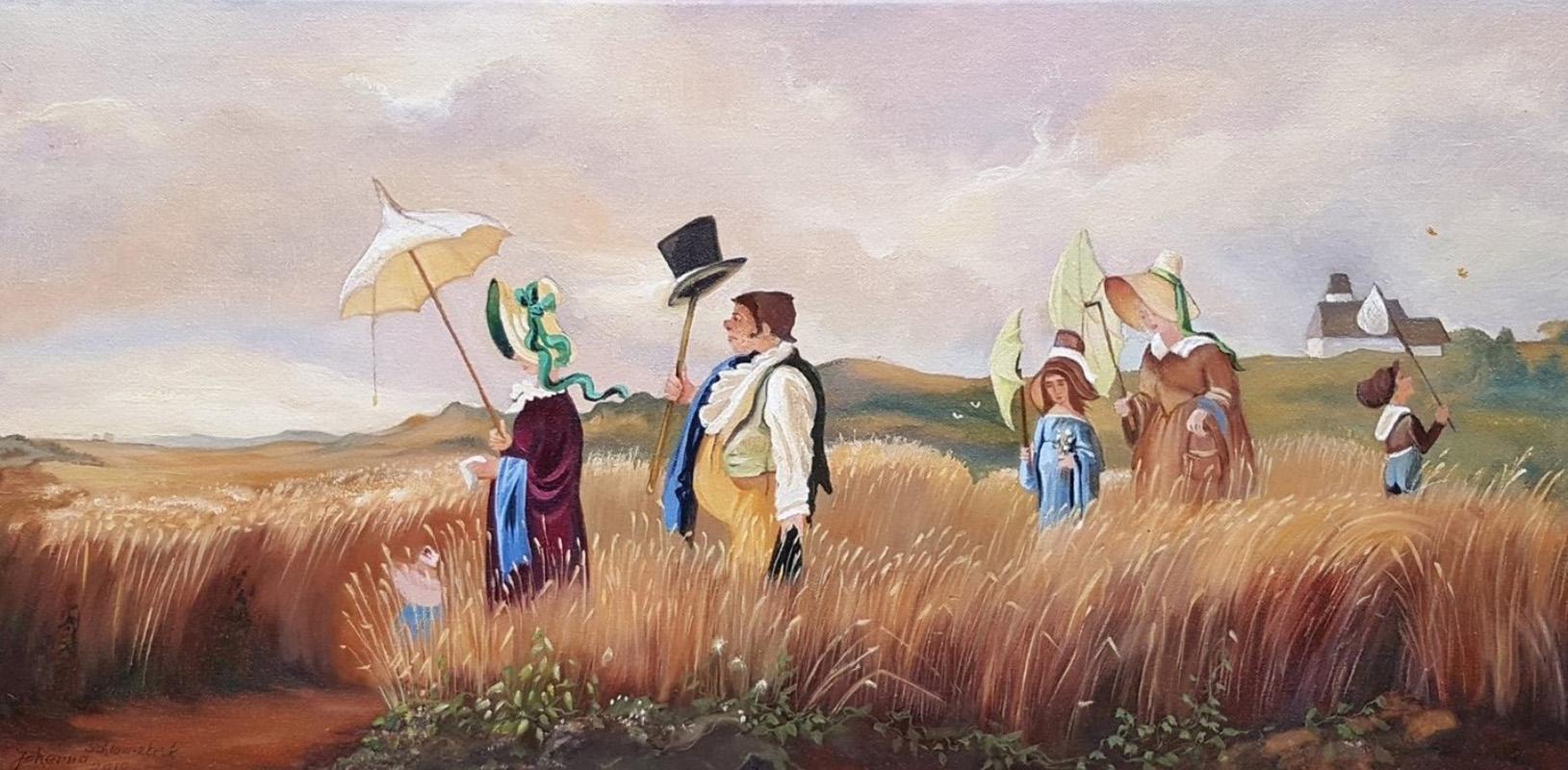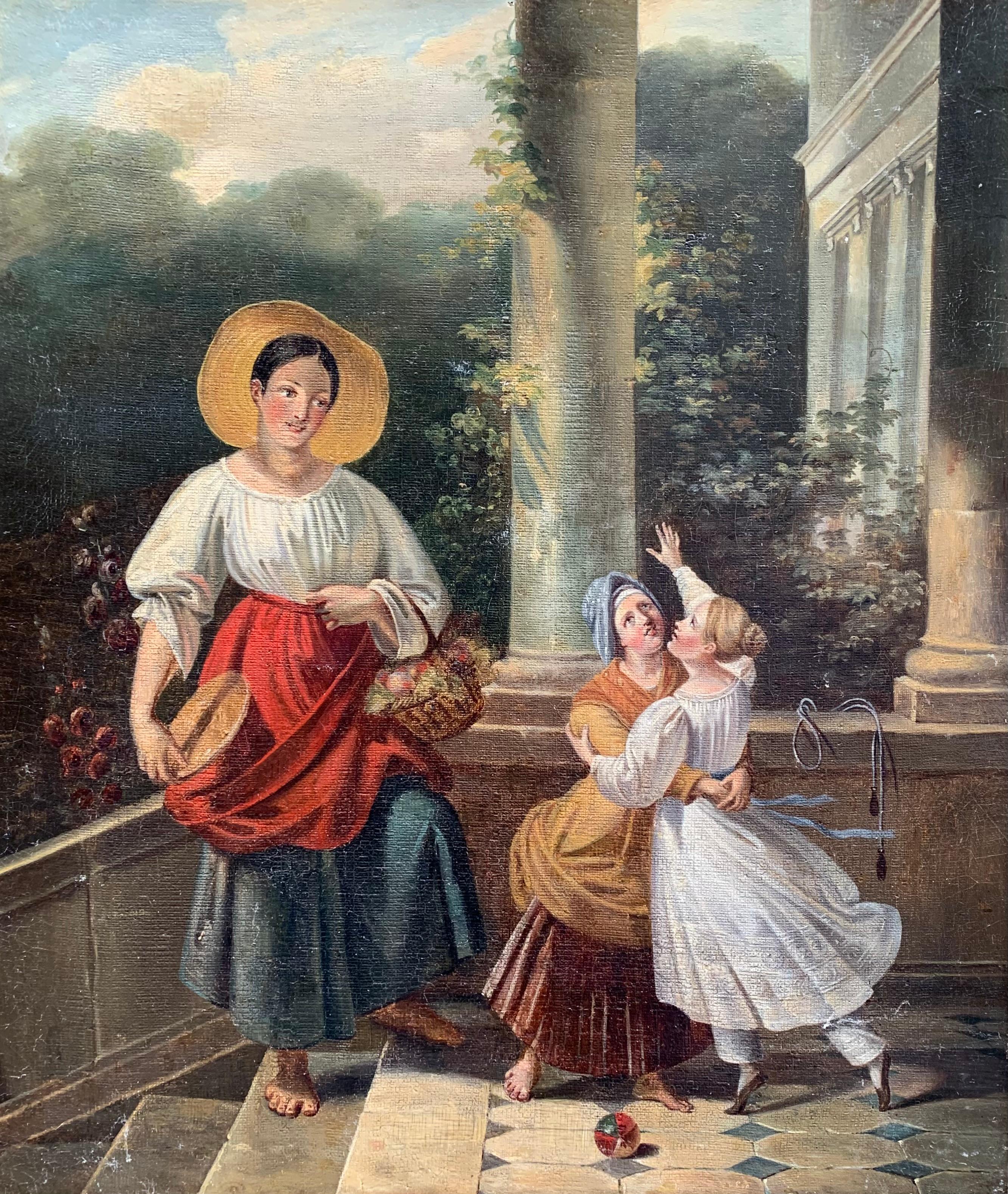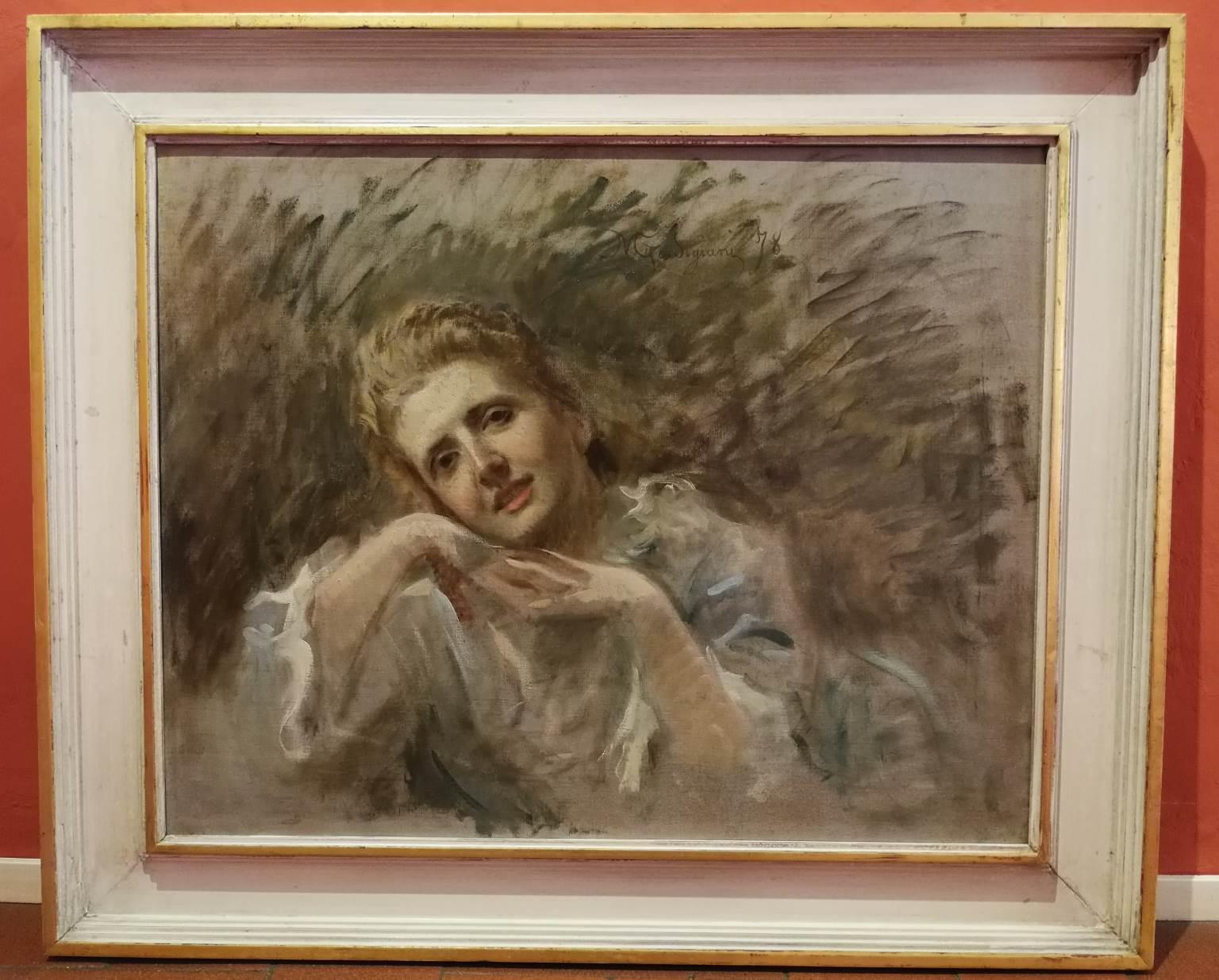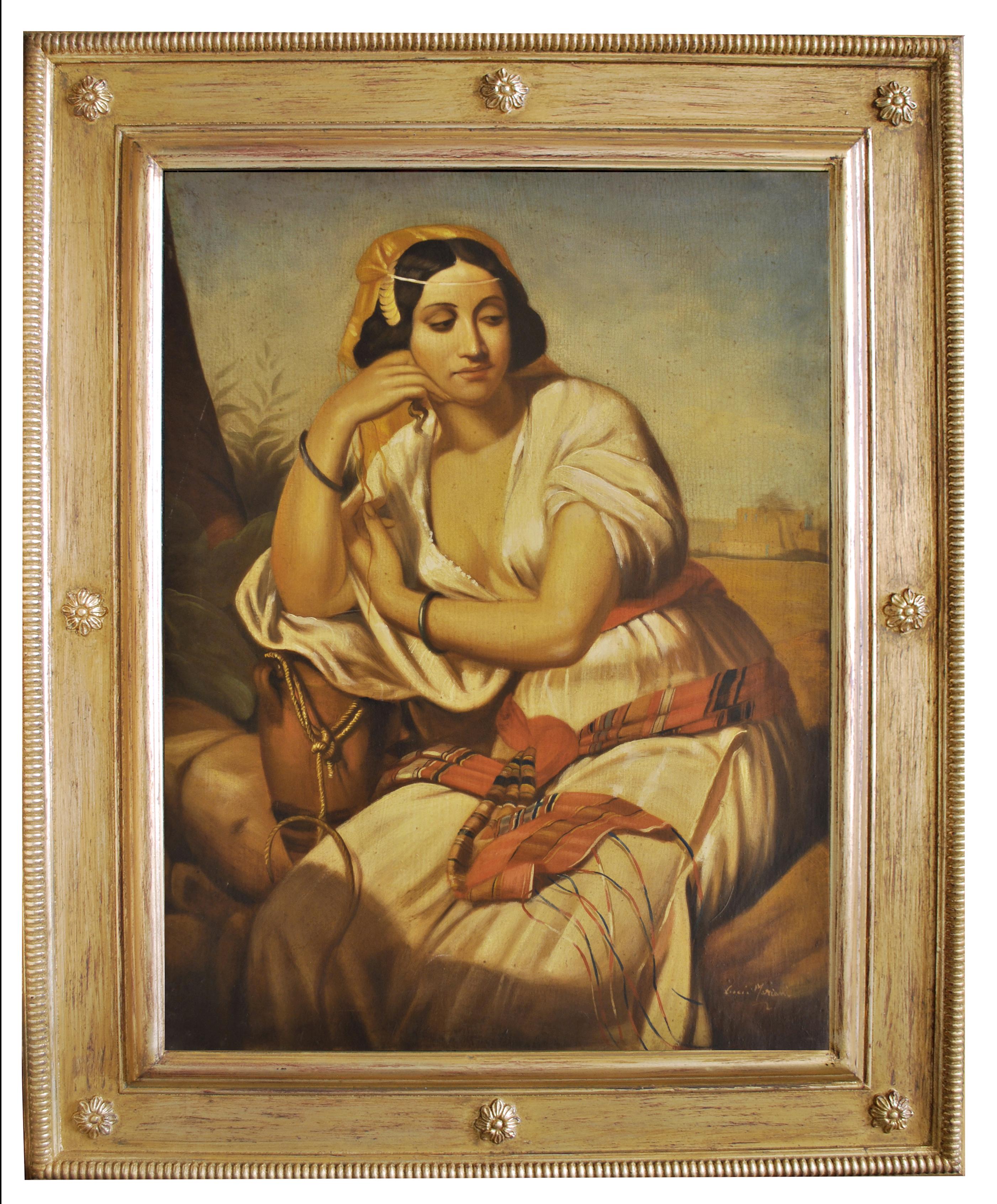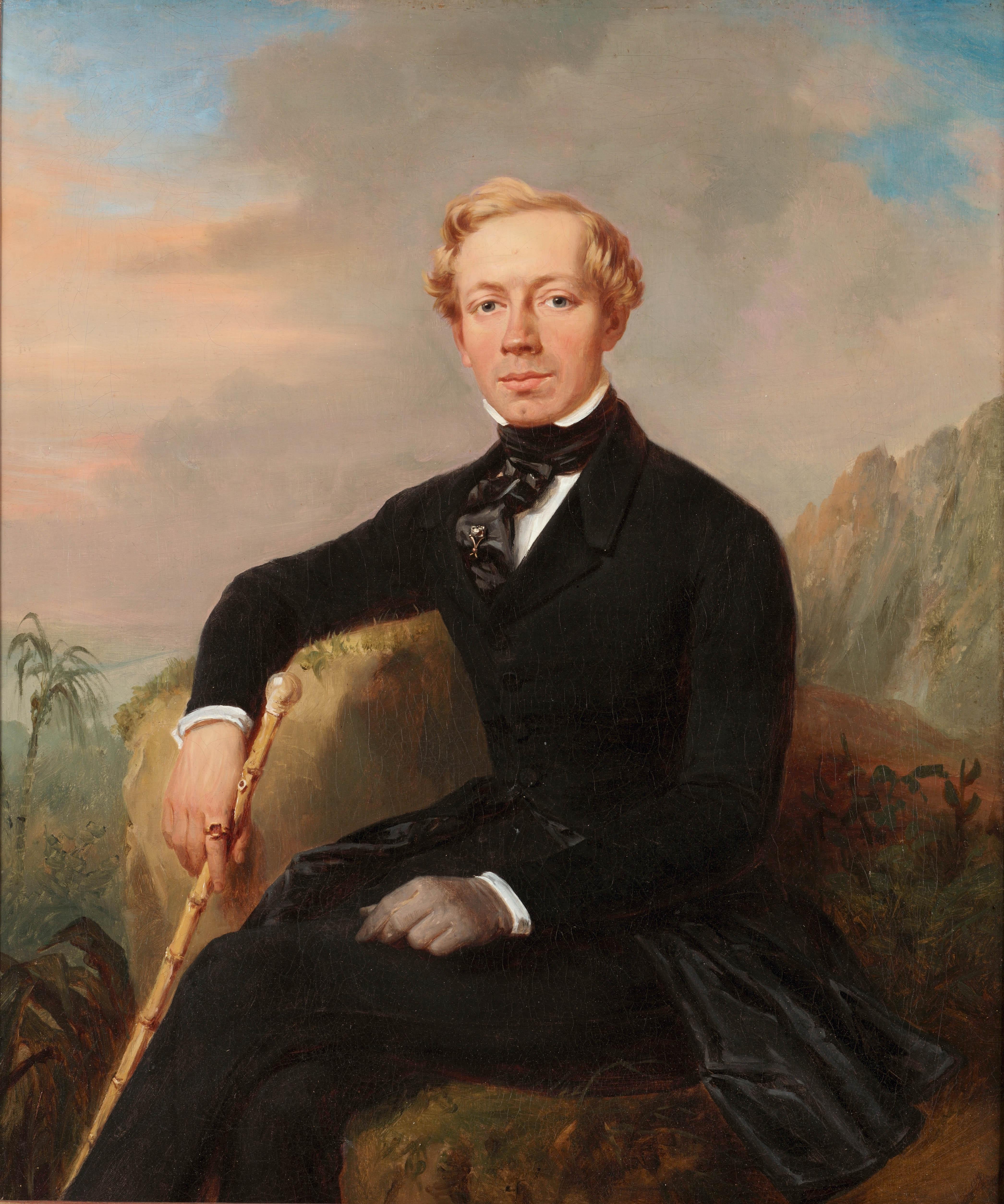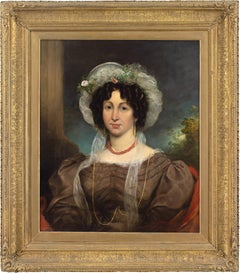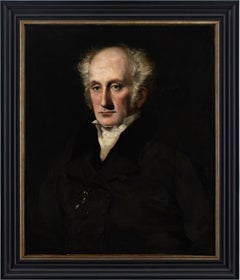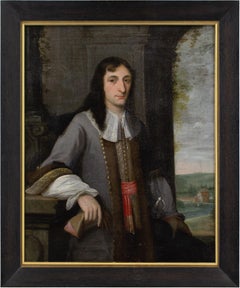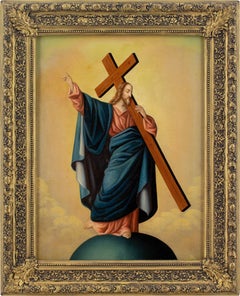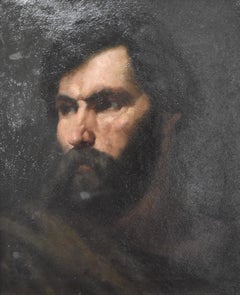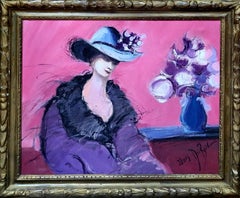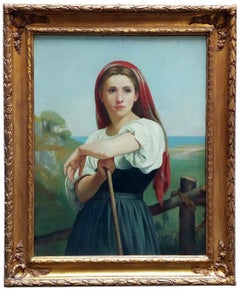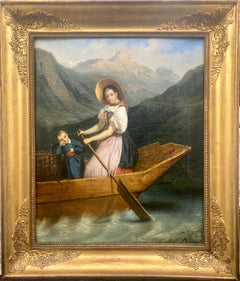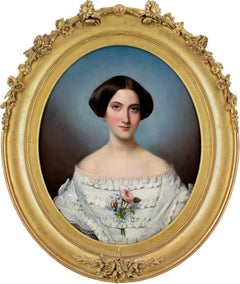
Adèle Kindt, Portrait Of A Lady With Roses & Forget-Me-Nots
View Similar Items
Want more images or videos?
Request additional images or videos from the seller
1 of 10
Adèle KindtAdèle Kindt, Portrait Of A Lady With Roses & Forget-Me-Nots1854
1854
About the Item
- Creator:Adèle Kindt (1804 - 1893, Belgian)
- Creation Year:1854
- Dimensions:Height: 36.5 in (92.71 cm)Diameter: 32 in (81.28 cm)
- Medium:
- Movement & Style:
- Period:
- Condition:Assessed and approved by our conservator. Cleaned. Revarnished. Fine and settled craquelure, as you would expect. The paint layer is stable. One old patch. Frame restored. Superficial cracks to the frame.
- Gallery Location:Cheltenham, GB
- Reference Number:1stDibs: LU2328214456802
About the Seller
5.0
Platinum Seller
Premium sellers with a 4.7+ rating and 24-hour response times
Established in 2017
1stDibs seller since 2023
230 sales on 1stDibs
Typical response time: 2 hours
Authenticity Guarantee
In the unlikely event there’s an issue with an item’s authenticity, contact us within 1 year for a full refund. DetailsMoney-Back Guarantee
If your item is not as described, is damaged in transit, or does not arrive, contact us within 7 days for a full refund. Details24-Hour Cancellation
You have a 24-hour grace period in which to reconsider your purchase, with no questions asked.Vetted Professional Sellers
Our world-class sellers must adhere to strict standards for service and quality, maintaining the integrity of our listings.Price-Match Guarantee
If you find that a seller listed the same item for a lower price elsewhere, we’ll match it.Trusted Global Delivery
Our best-in-class carrier network provides specialized shipping options worldwide, including custom delivery.More From This Seller
View AllGeorge Clint ARA (Attributed), Portrait Of A Lady In A Brown Dress
Located in Cheltenham, GB
This early 19th-century half-length portrait attributed to British artist George Clint ARA (1770-1854) depicts a young lady wearing a beautiful brown dress, bonnet decorated with small flowers, gold earrings and coral necklace. Clint was a distinguished painter and mezzotint engraver predominantly known for portraiture and dramatic scenes.
Set before an evocative classically-inspired backdrop, she looks out from across the centuries with a composed demeanour. Adorned in the latest fashions, oversized ‘gigot’ sleeves, a delicately-poised bonnet, and a coral necklace for good luck. It’s a charming portrayal by a masterful hand.
Born at Drury Lane, in the heart of London’s West End, George Clint was destined to lead an exuberant life amid the spectacle of theatreland. His father, Michael Clint, was a hairdresser during a time of “hair pomatum, whalebone, wire, lace gauze, and feathers” - so young George would have encountered a variety of ‘characters’ during his childhood.
But despite these elevated surroundings, he soon discovered the darker side of London when thrust into the world of employment. Apprenticed initially as a fishmonger, he trained under a ferocious master who was known to beat him. The hours were unsocial, the conditions rank, and the work was brutal. He soon quit but subsequently found himself toiling for a corrupt attorney who demanded he undertake unscrupulous acts on his behalf.
Seeking a less volatile role, he turned next to house painting, at which he excelled. Commissioned, among other projects, to paint the stones of the arches in the nave of Westminster Abbey. Aside from an incident whereby he almost fell from the second story of a building, all was going well.
Following his marriage in 1792 to Sarah Coxhead, a farmer’s daughter, he began work in earnest as a painter of miniatures, determined to forge a career. Robert William Buss’ memoir celebrates Clint’s success as a miniaturist, stating that “great manual excellence was united with that chaste, delicate feeling for female beauty which characterised all Mr. Clint's portraits of ladies.”
Until this point, it appears he was predominantly self-taught, presumably constrained by a lack of finances. But from hereon in, his industrious nature coupled with several fortunate encounters, led to him developing an enviable talent for both painting and engraving. During the early 19th-century, the acquaintances one kept could make or break your fortunes and perhaps acutely aware of this, Clint’s ‘society’ was an ever-evolving circle of influential personalities.
He was “initiated into the mysteries of engraving” by Edward Bell (act.1794-1819) and produced numerous works after the foremost artists, such as George Stubbs, John Hoppner, and Thomas Lawrence. Following a commission from Lawrence, he struck up a long-term friendship.
Admired for his skill as a mezzotint engraver, he sought next to hone his technique in oils and, as with many aspiring portraitists, his first work in this respect was a depiction of his beloved wife. The pair were both delighted with it, yet over time Clint began to doubt himself and sought the validation of a superior hand - that of Sir William Beechey (1753-1839). However, paralysed with insecurity, he couldn’t face the potential criticism, so his wife took it instead - “with a child under one arm and the portrait in the other”. The result was immeasurably more positive than he’d envisaged and he became closely associated with Beechey until his death in 1839.
Numerous commissions followed from the landed gentry including Lord Egremont, Lord Spencer, and Lord Essex. But also from the theatrical community who would fill his studio at 83 Gower Street, Bloomsbury. His connections within the world of acting led to notable works such as ‘Malvolio and Sir Toby’ (from William Shakespeare's 'Twelfth Night', Act II, Scene iii)’ and ‘Harriet Smithson as Miss Dorillon, in Wives as They Were, and Maids as They Are’.
While his efforts in mezzotint included several contributions to JMW Turner’s Liber Studiorum.
As a measure of his success, Clint was elected an Associate of the Royal Academy in 1821 - a position he later relinquished for personal reasons. Today, he’s represented in numerous public collections including at The British Museum, Harvard Art Museums, The Met, V&A, Yale Center for British Art, and the National Portrait Gallery.
“The respect in which he was held, not only by his brother artists, but by an immense number of eminent men in various professions, and others of the highest rank, was the result of a rare combination of talent, candour, suavity of manner, and integrity of purpose”. [Obituary, 1854].
Housed in a period gilt frame, which is probably original.
Learn more about George Clint ARA in our directory.
Labels & Inscriptions: Supplier’s stencil from Rowney & Forster. The National Portrait Gallery holds a database of supplier’s stencils over the decades. The one here is also presented on two other works by George Clint. ‘Falstaff’s Assignation with Mrs Ford...
Category
1830s English School Portrait Paintings
Materials
Canvas, Oil
John Robert Wildman, Portrait Of A Gentleman
Located in Cheltenham, GB
This mid-19th-century oil painting by British artist John Robert Wildman (1788-1843) depicts a gentleman wearing a dark brown frock coat with waistcoat, white shirt and cravat. He be...
Category
1840s Portrait Paintings
Materials
Canvas, Oil
17th-Century Flemish School, Portrait Of A Gentleman In A Justaucorps
Located in Cheltenham, GB
This fine late 17th-century Flemish portrait depicts a distinguished gentleman wearing a justaucorps, black cloak, white shirt, vest, leather gloves, and breeches. He’s carrying a wi...
Category
1670s Old Masters Portrait Paintings
Materials
Canvas, Oil
Early 19th-Century Central European School, Christ The Saviour
Located in Cheltenham, GB
This early 19th-century central European oil painting depicts Christ The Saviour standing atop an orb and carrying a cross over his left shoulder.
An unusual composition, Christ’s rather striking posture is perhaps more ‘Saturday Night Fever’ than it is sacramental. However, the iconography is archaic and derived ultimately from New Testament illustrations dating to the Middle Ages. Depictions of orbs are usually symbolic of the universe, while the cross alludes to redemption. Hence, it’s a visual representation of Christ as the Saviour of humanity.
Francisco de Zurbarán...
Category
1830s Portrait Paintings
Materials
Canvas, Oil
Robert Walker Macbeth RA ROI RWS, Far From The Madding Crowd
Located in Cheltenham, GB
This spellbinding late 19th-century oil painting by Scottish artist Robert Walker Macbeth RA ROI RWS (1848-1910) depicts a young woman wearing...
Category
1880s Victorian Portrait Paintings
Materials
Canvas, Oil
David Tägtström, Hegert, Oil Painting
Located in Cheltenham, GB
This early 20th-century oil painting by Swedish artist David Tägtström (1894-1981) depicts a seated woman referred to as ‘Hegert’.
Leaning forward as if listening intently to a fami...
Category
1930s Portrait Paintings
Materials
Canvas, Oil
You May Also Like
French Romantic School, 19th Century, Manly head of bearded man, oil on canvas
Located in Paris, FR
French Romantic School
19th Century
Manly head of bearded man
oil on canvas
46 x 37.8 cm
In fairly good condition, some inpaintings visible under UV light, mainly in the backgrounds ...
Category
1850s Romantic Portrait Paintings
Materials
Canvas, Oil
La Femme au Chapeau Bleu, Large French Fauvist Figurative Oil on Canvas.
By Jean-Louis Dubuc
Located in Cotignac, FR
Large scale colourful figurative portrait of a fashionable lady in a blue hat by French artist Jean-Louis Dubuc. The painting is signed bottom right and titled to the rear cross stre...
Category
Late 20th Century Romantic Portrait Paintings
Materials
Canvas, Oil, Acrylic
$1,965 Sale Price
50% Off
COUNTRY GIRL- Angelo Granati - Figurative oil on canvas painting
By Angelo Granati
Located in Napoli, IT
Country girl - Angelo Granati Italia 2011 - Oil on canvas cm. 90 x 70.
This is his reinterpretation of painting "Young Shepherdess" by gratest old master William Adolphe Bouguereau.
...
Category
2010s Romantic Portrait Paintings
Materials
Canvas, Oil
The Fair Skipper: boating on a mountain lake ca 1830 the Swiss Alps painting
Located in Norwich, GB
Here is an almost two hundred year old painting which is so irresistibly charming that it's crazy! You may have seen painted landscapes, portraits, genre scenes - but how many pretty...
Category
1830s Romantic Figurative Paintings
Materials
Canvas, Oil
Portrait of a young Girl with a Doll, Basile de Loose, Belgium, 19th, Romantic
By Basile de Loose
Located in Greven, DE
Basile de Loose
Portrait of a Child
signed and dated „1861“
Basile De Loose (17 December 1809 – 24 October 1885) was a Belgian painter.
He was born in Zele, East Flanders, United K...
Category
19th Century Romantic Figurative Paintings
Materials
Canvas, Oil
Gold & Despair
By Johanna Schwarzbeck
Located in Brooklyn, NY
Gold & Despair is my adaptation of Gustav Klimt’s masterpiece "The Woman In Gold", also known as The Mona Lisa of Austria. Having admired the symbolic art of Klimt since my working days as a fine art restorer at Vienna’s prestigious Conservation Institute (Bundesdenkmalamt) in the 1980’s, I conceived the idea to recreate the jewel of his gilded period with an interpretive lens on the looming darkness of the Holocaust and World War II.
As a native of Austria, Salzburg, I have developed an appreciation for Klimt’s art, and Art Nouveau in general. For the last thirty years, I have lived in New York City and worked as a fine art restorer, conservator, and painter as well as in the healing arts.
Klimt had executed The Woman in Gold in the span of four years (1903-1907). My own creative process during 2014-2017, reflects my diligent care and thoroughness in rendering the original painting. In 2014, I started with the preparation of the canvas using Klimt’s original size of 54 x 54 inches (167 x 167 cm). For gesso, I used the traditional method of rabbit skin glue and chalk. For the painting, I used oil paints and genuine 23.5 karat gold in various shades, as well as silver leaves, to magnify the brilliant sheen of Klimt’s gold...
Category
2010s Romantic Mixed Media
Materials
Gold Leaf
Price Upon Request
